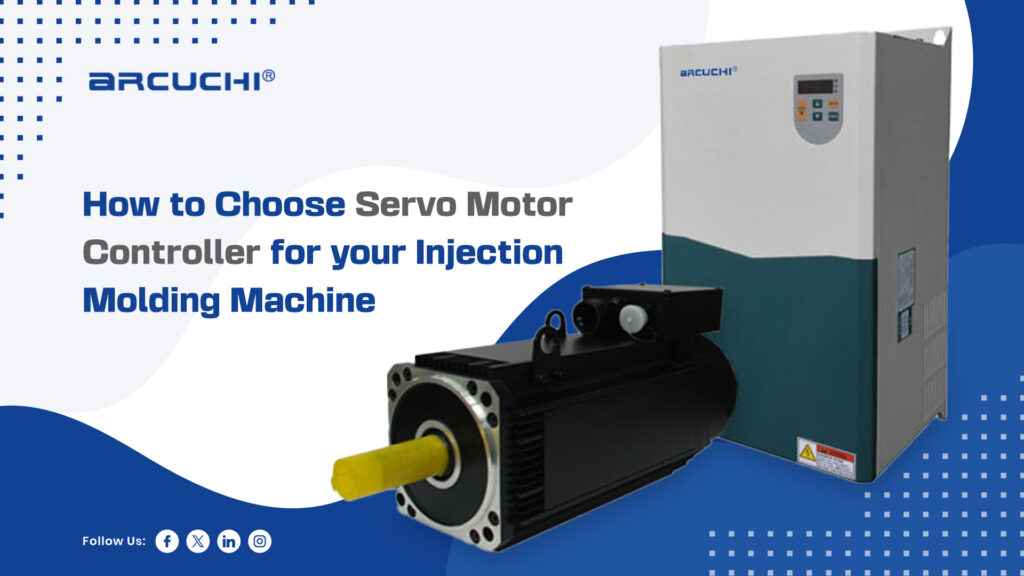In the dynamic world of injection molding, choosing the right servo motor controller is crucial for efficiency and productivity. However, navigating the options can be daunting. Fear not! This guide is here to demystify the process and help you make an informed decision without drowning in technicalities.

13 Guidelines for Choosing the Right Servo Motor Controller
1. Understanding Servo Motor Controllers
Servo motor controllers are the brains behind the operation. Think of them as the conductor of an orchestra, ensuring each component plays its part harmoniously. These controllers regulate the motor’s speed, position, and torque, optimizing performance.
2. Importance of Servo Motor Drivers
Servo motor drivers act as interpreters, translating signals from the controller into precise movements. Imagine them as the language translators, ensuring everyone understands the instructions clearly. The right driver is essential for seamless communication and performance.
3. Key Features to Look For
When choosing a hydraulic servo motor consider features like:
- Precision Control: Ensure the controller provides accurate and responsive control over the motor.
- Energy Efficiency: Opt for controllers that maximize energy utilization for cost-effectiveness.
- Compact Design: Space matters. Choose a controller that fits seamlessly into your setup.
4. Compatibility with Injection Molding Machines
Not all controllers are created equal. Check compatibility with your specific injection molding machine to avoid operational hiccups. A mismatch could lead to inefficiencies and potential damage.
5. Benefits of Upgrading to a Servo Motor Controller
Upgrading offers advantages such as:
- Improved Energy Efficiency: Save on operational costs with precise energy consumption.
- Enhanced Precision: Achieve better product quality with accurate control over the mo
- lding process.
- Reduced Maintenance: Servo controllers often require less maintenance, saving you time and resources.
6. How to Install and Calibrate Your Controller
Installation is a crucial step. Follow the manufacturer’s guidelines for proper setup. Calibration ensures optimal performance by fine-tuning the controller for your specific machine and molding requirements.
7. Maintenance Tips for Longevity
Keep your servo motor controller running smoothly by:
- Regular Inspections: Identify and address issues before they escalate.
- Lubrication: Ensure all moving parts are well-lubricated for longevity.
- Timely Updates: Stay updated with the latest firmware for improved performance.
8. Comparing Different Industrial Motors:
Explore various industrial motors and their suitability for your application. Consider factors like speed, torque, and compatibility with your servo motor controller.
9. Cost Considerations
Balancing quality and cost is crucial. Invest in a reliable servo motor controller that aligns with your budget while ensuring long-term efficiency.
10. User Reviews and Recommendations
Real-world experiences matter. Explore user reviews and seek recommendations to understand how different controllers perform in actual working conditions.
11. Common Mistakes to Avoid
Learn from others’ mistakes to save time and resources. Avoid pitfalls like neglecting compatibility checks or opting for controllers with unnecessary features.
12. Troubleshooting Your Servo Motor Controller
Know how to troubleshoot common issues. Quick diagnostics can prevent downtime and keep your injection molding machine running smoothly.
13. Future Trends in Servo Motor Technology
Stay ahead of the curve. Explore upcoming trends in servo motor technology, ensuring your investment remains relevant in the evolving landscape.
Conclusion
Choosing the right servo motor controller is pivotal for maximising efficiency in injection molding. With the insights provided in this guide, you’re equipped to make an informed decision that aligns with your operational needs and budget.